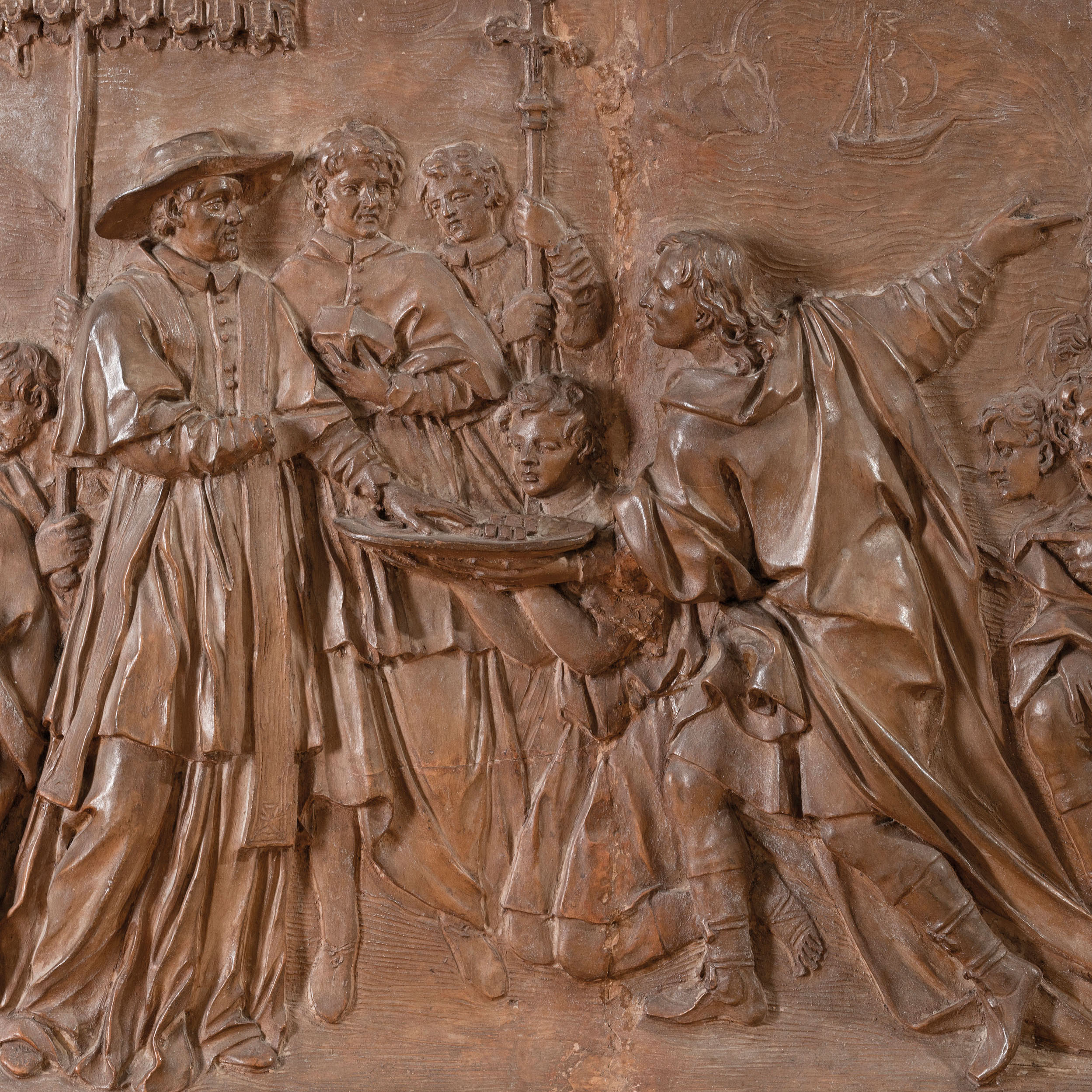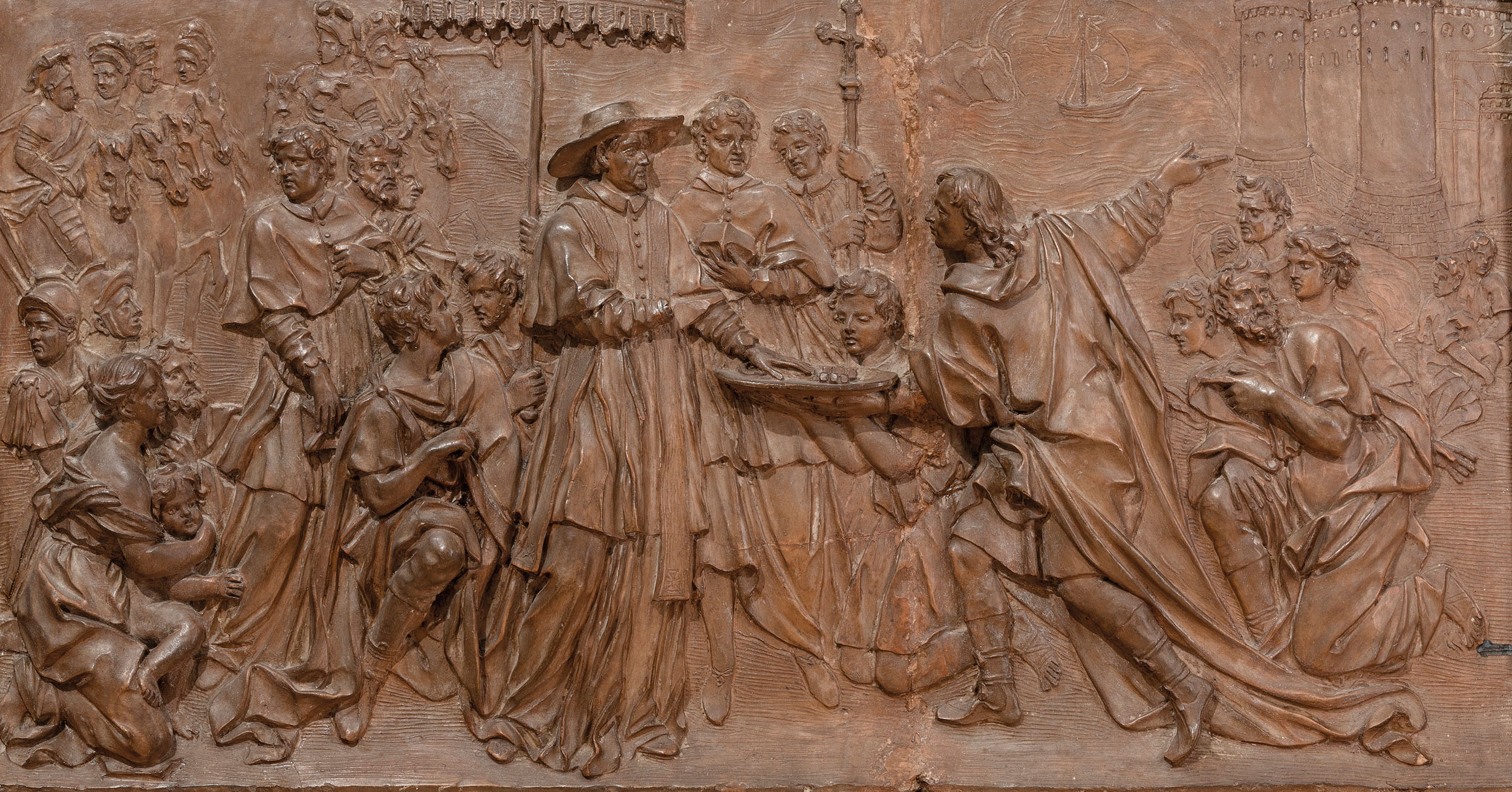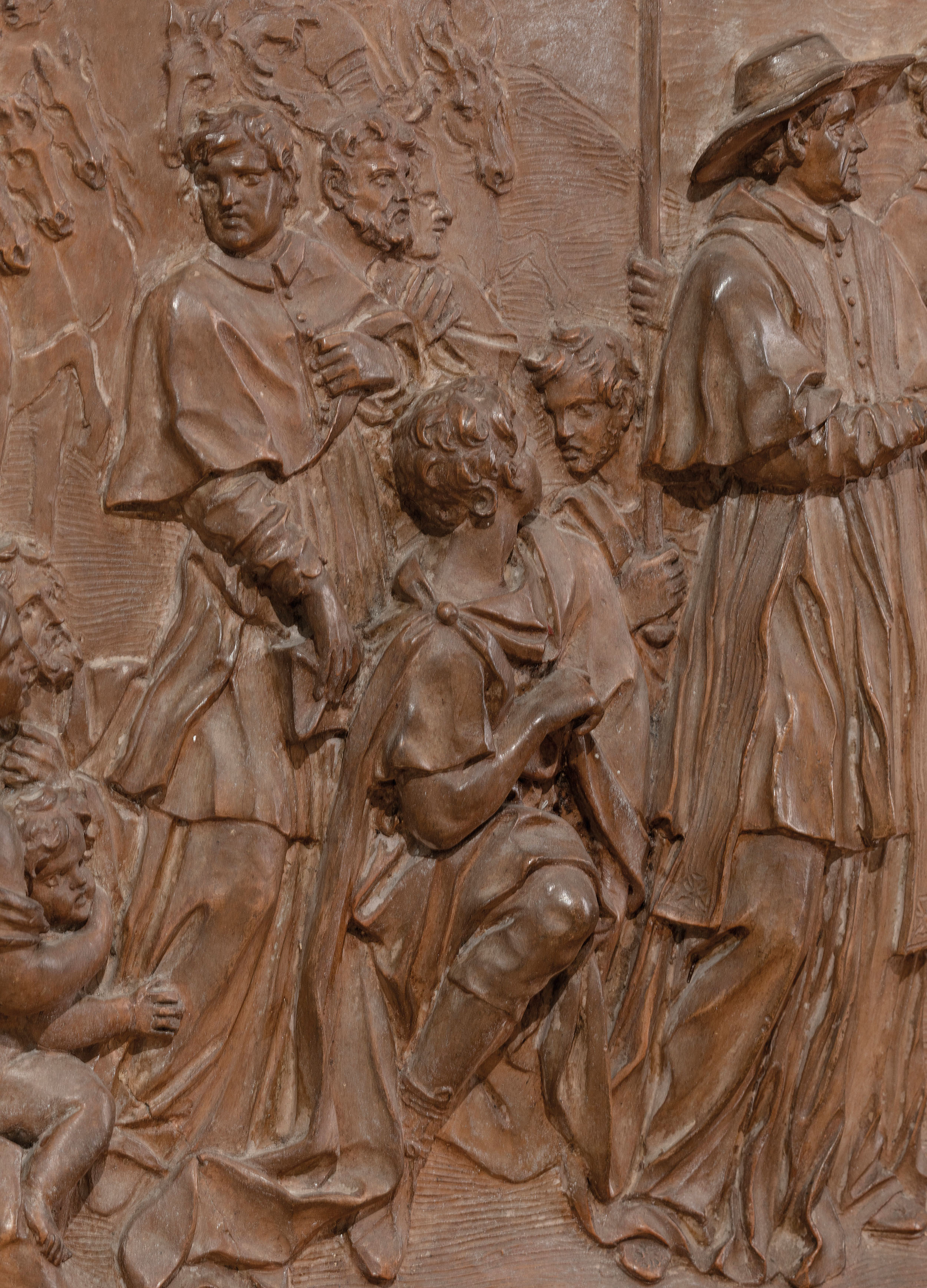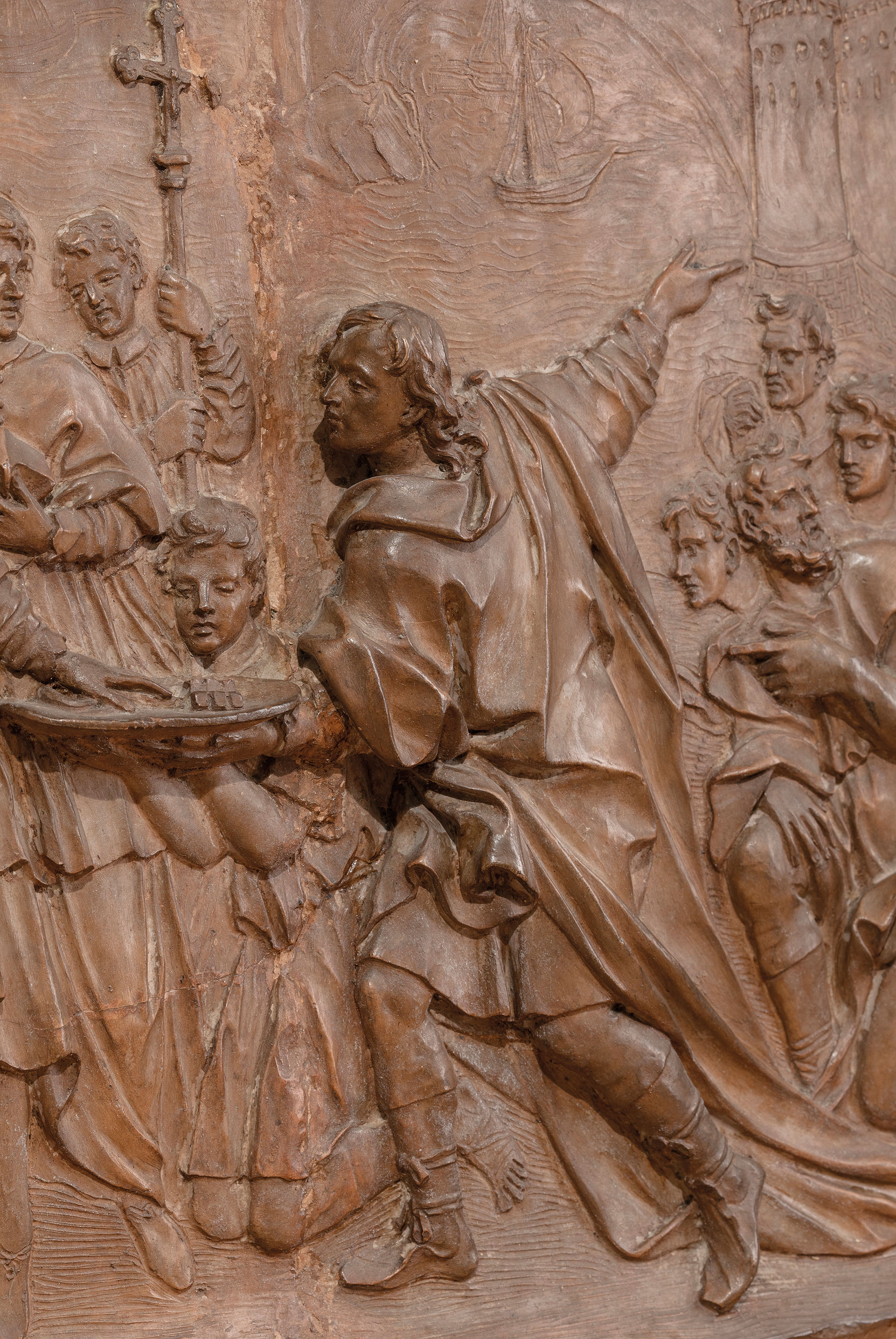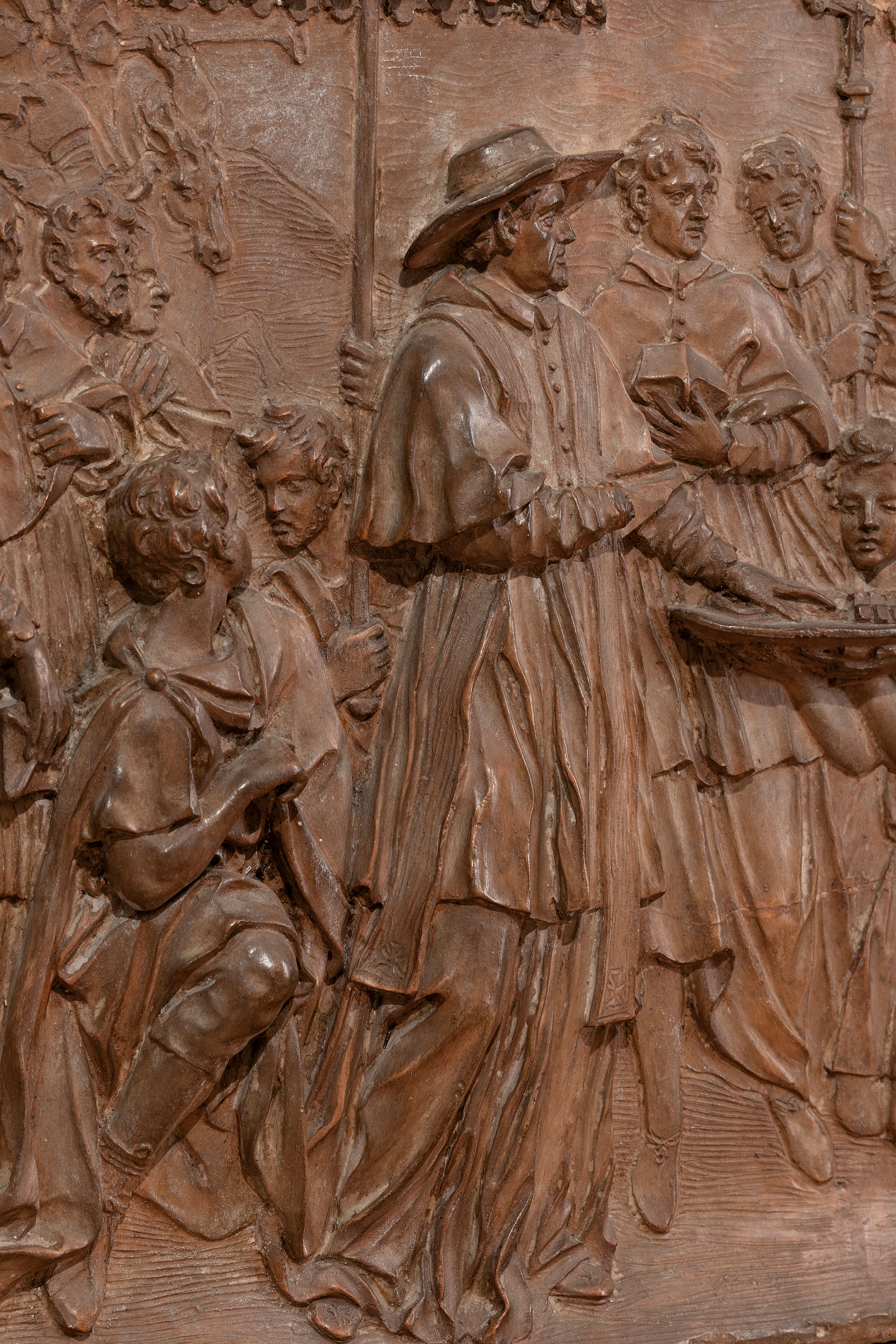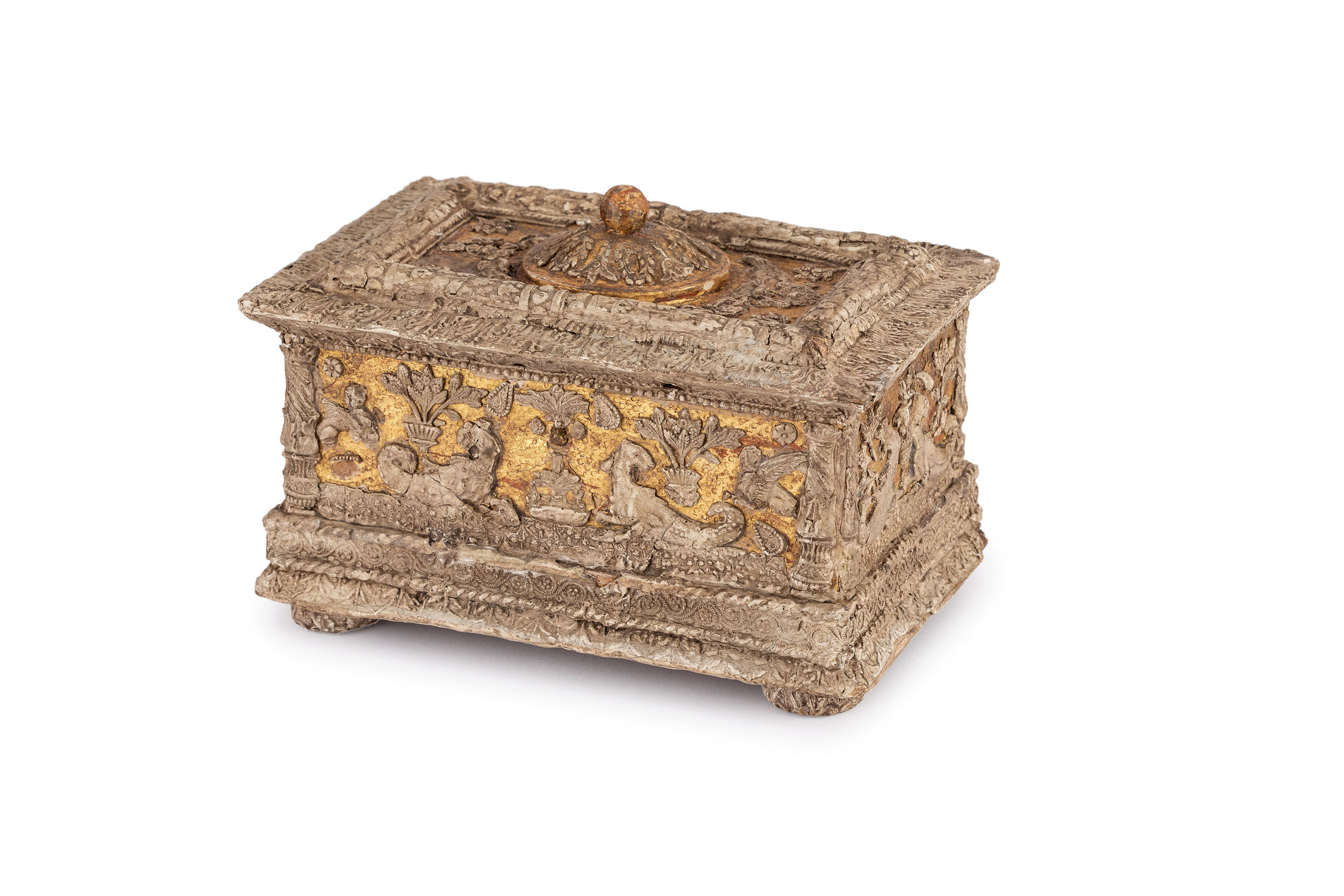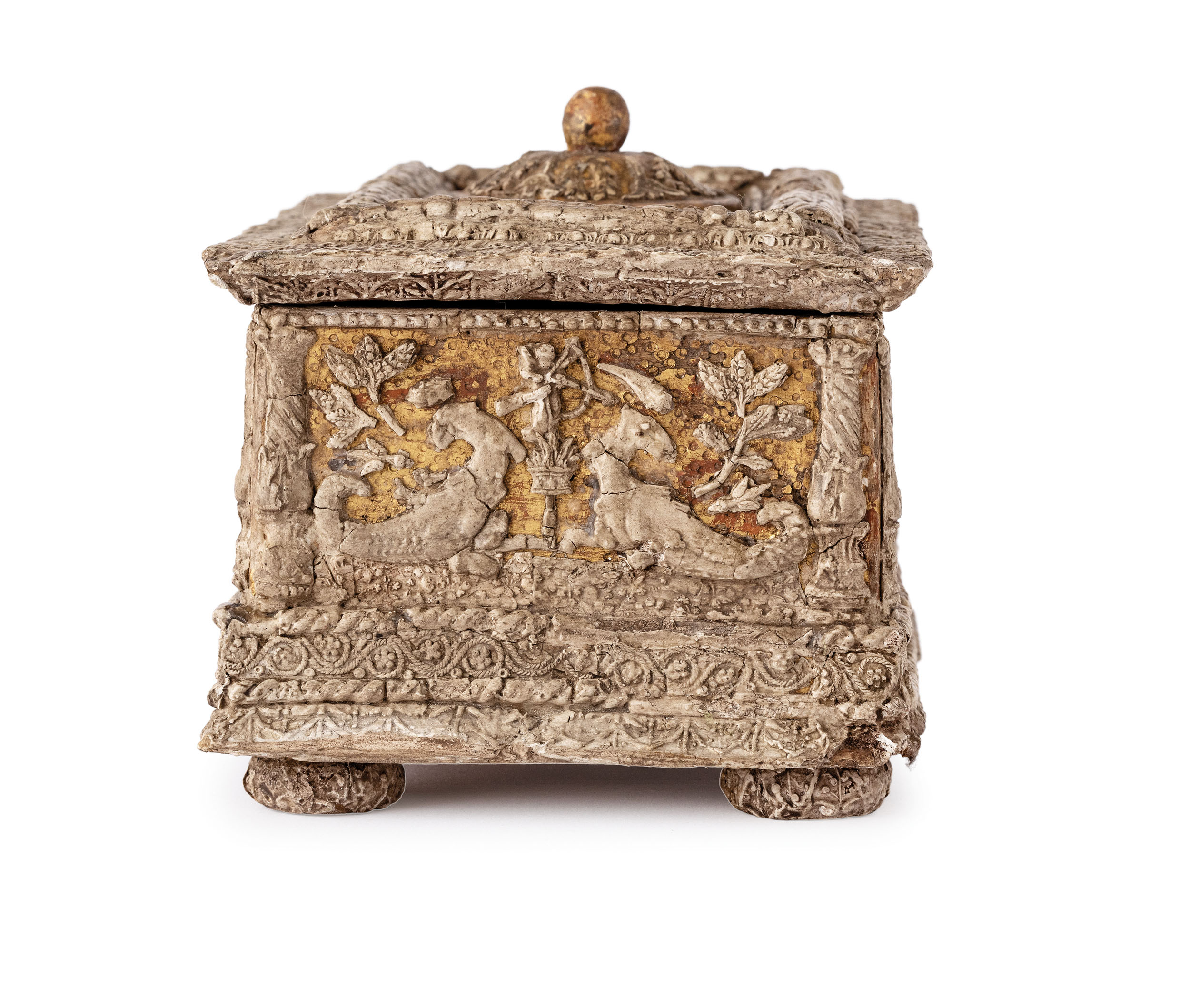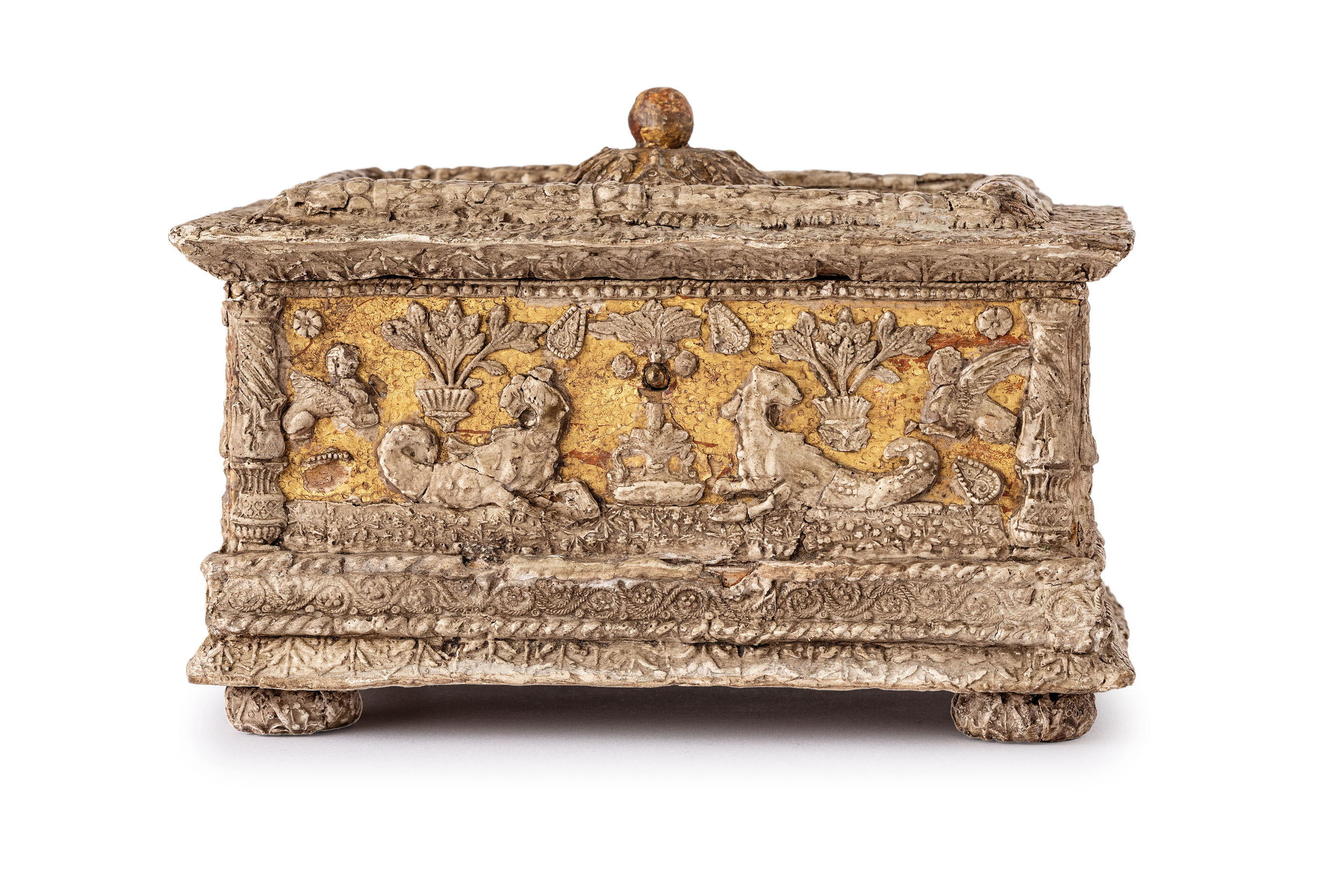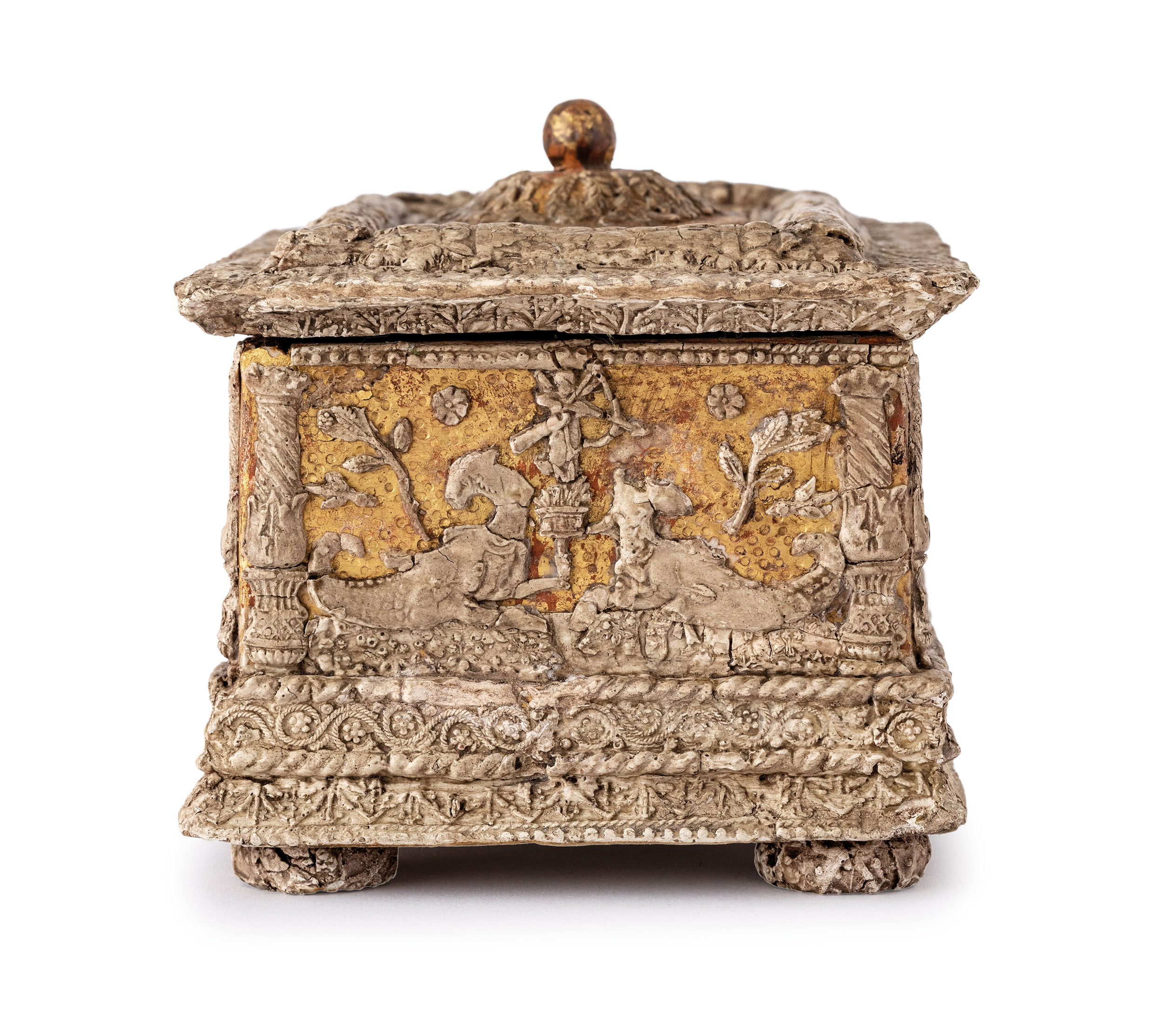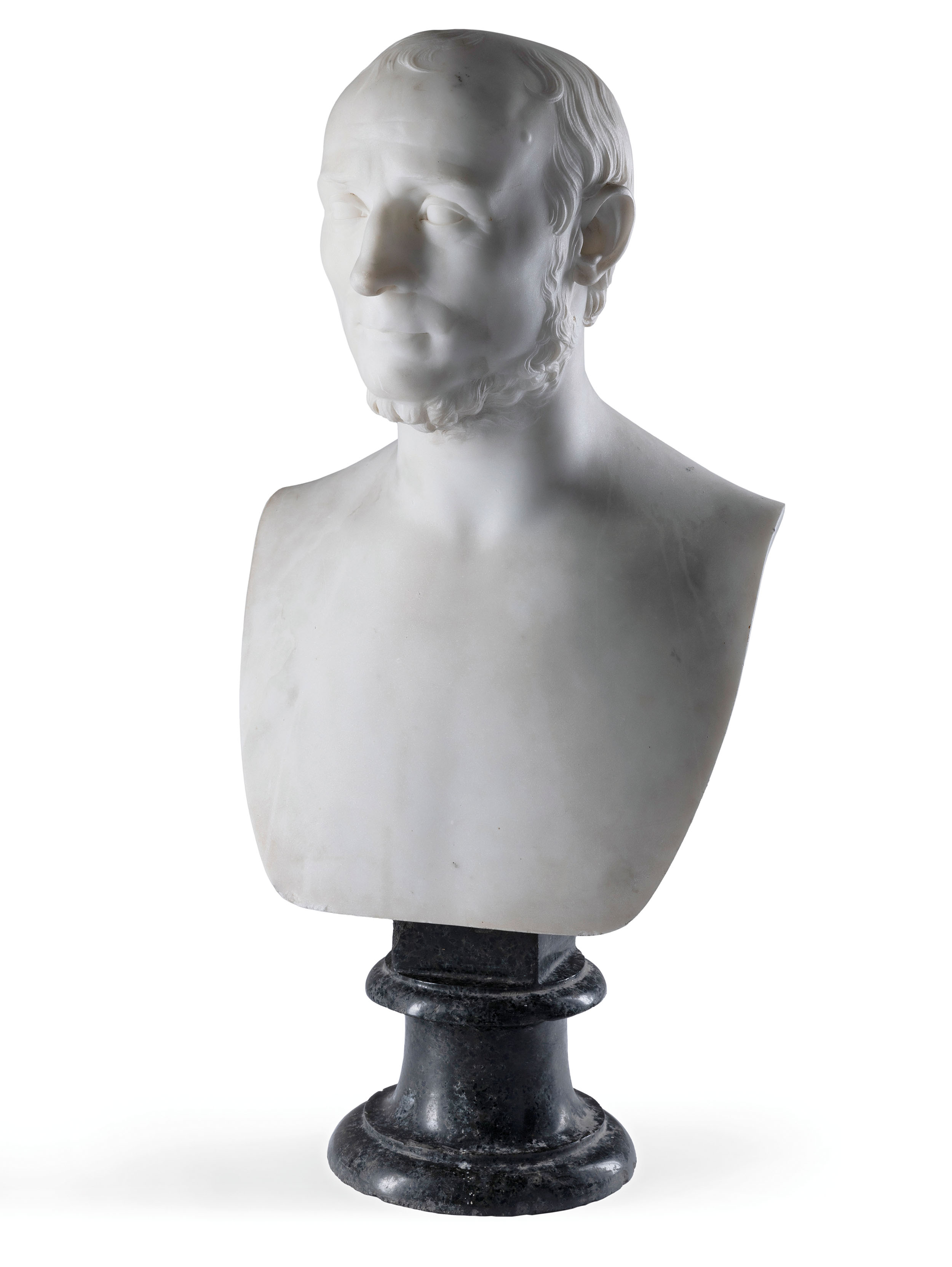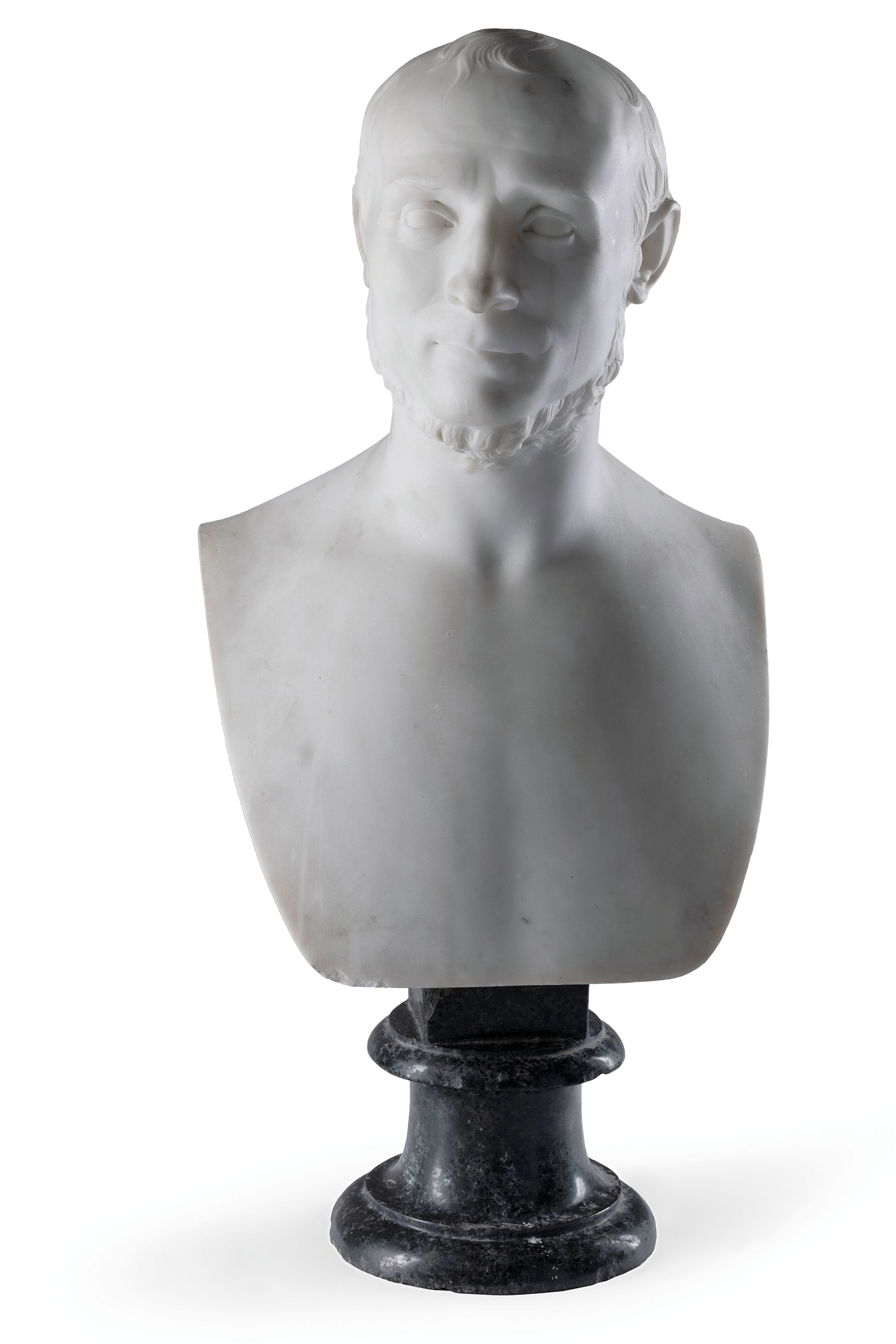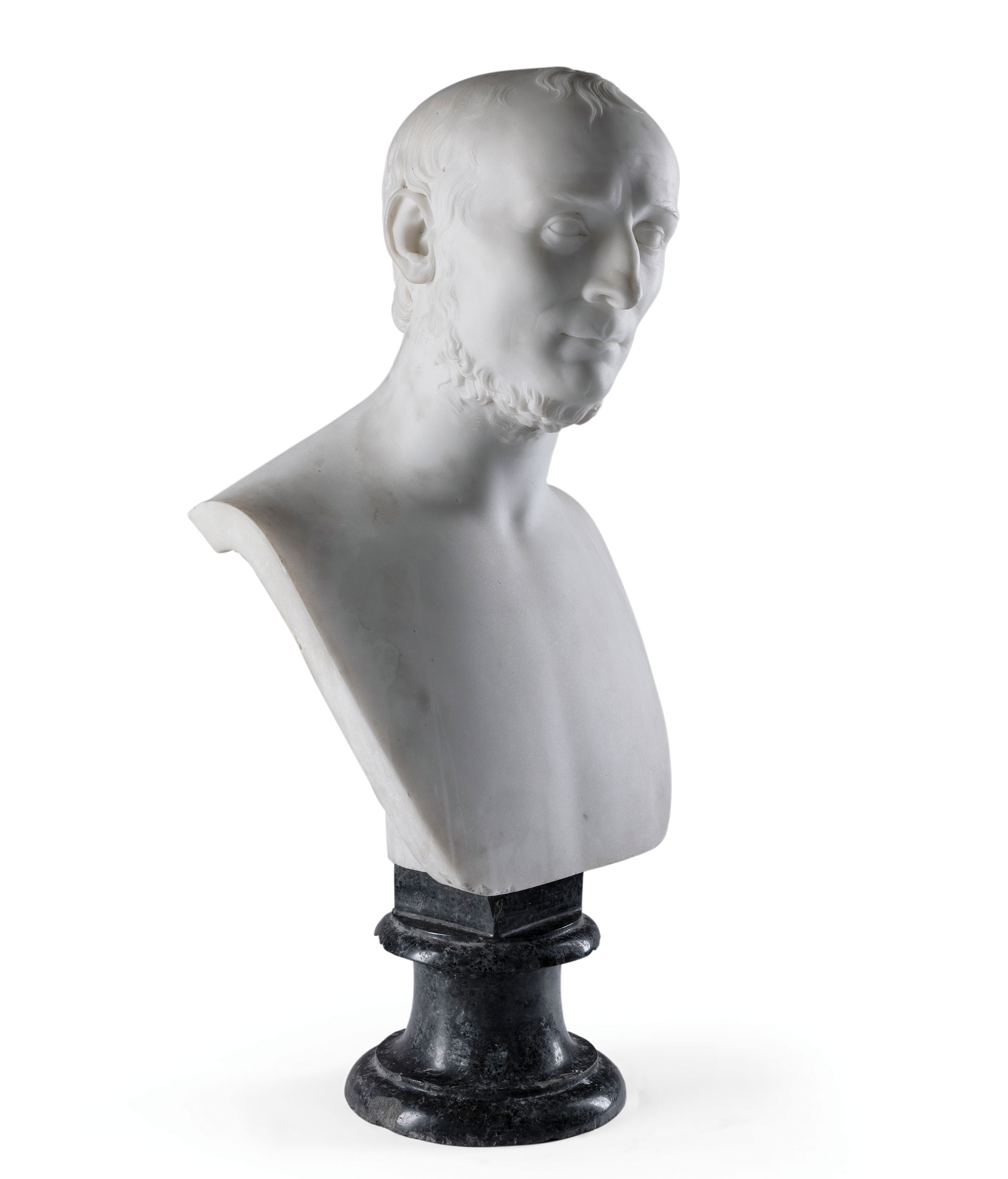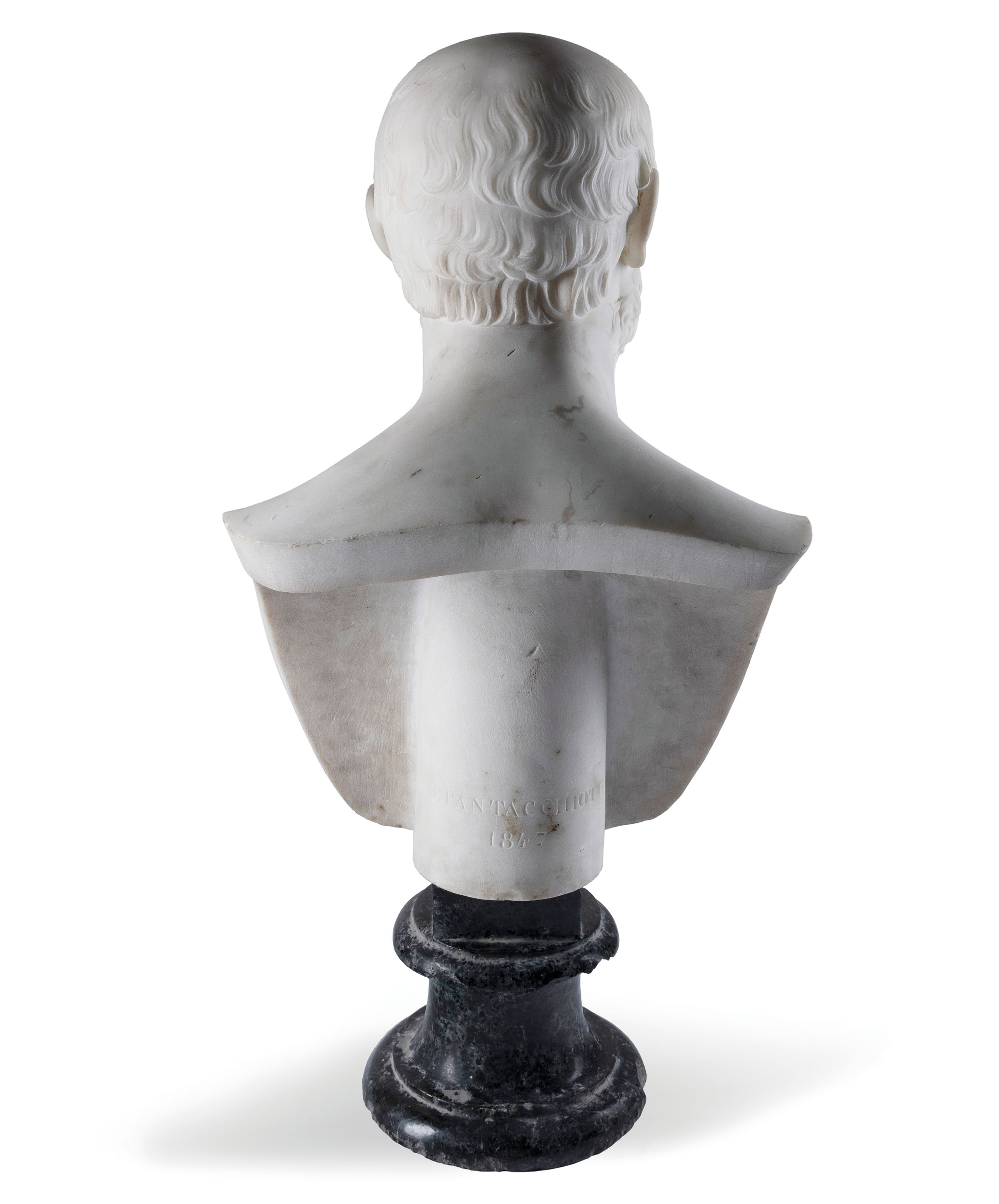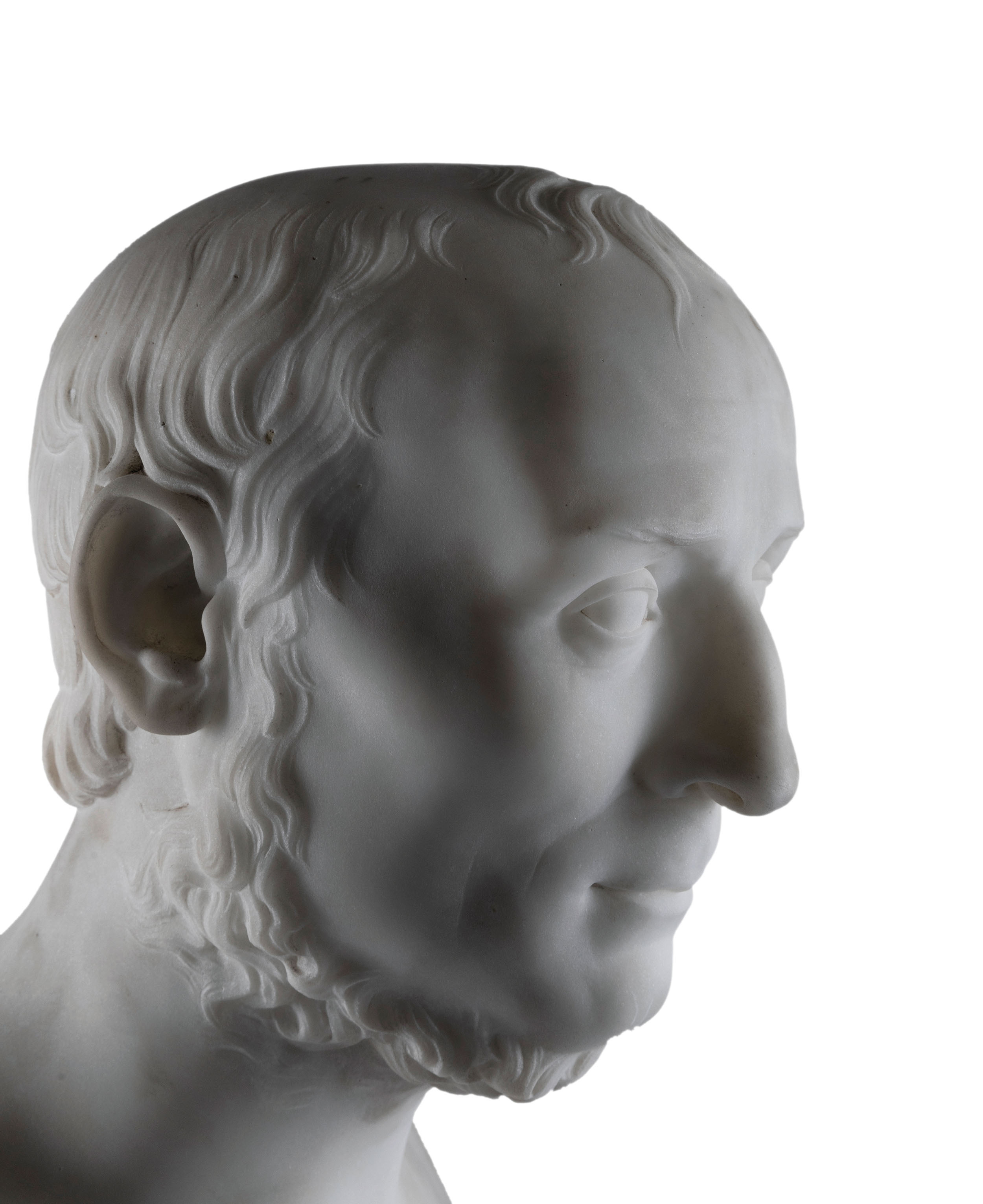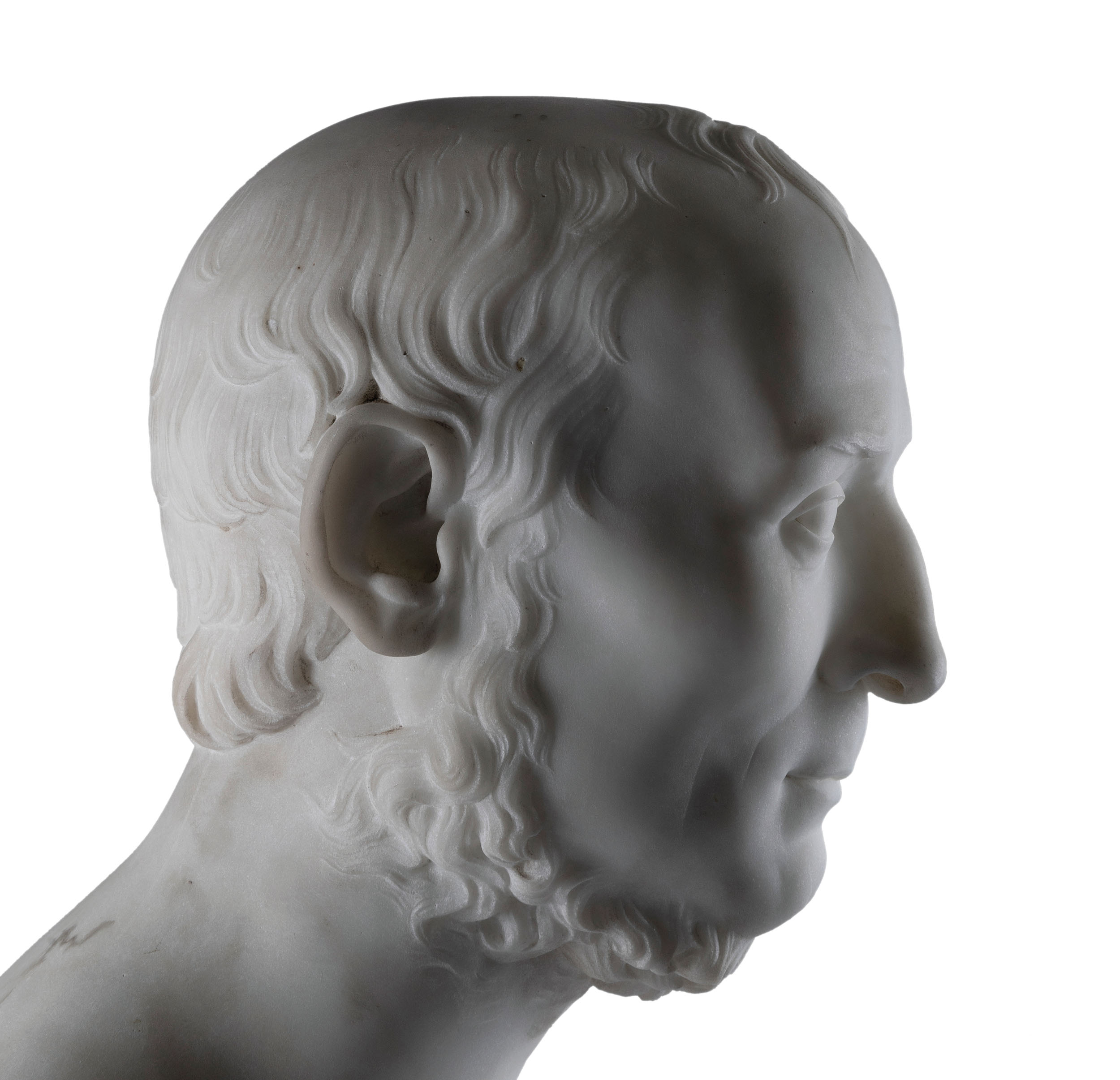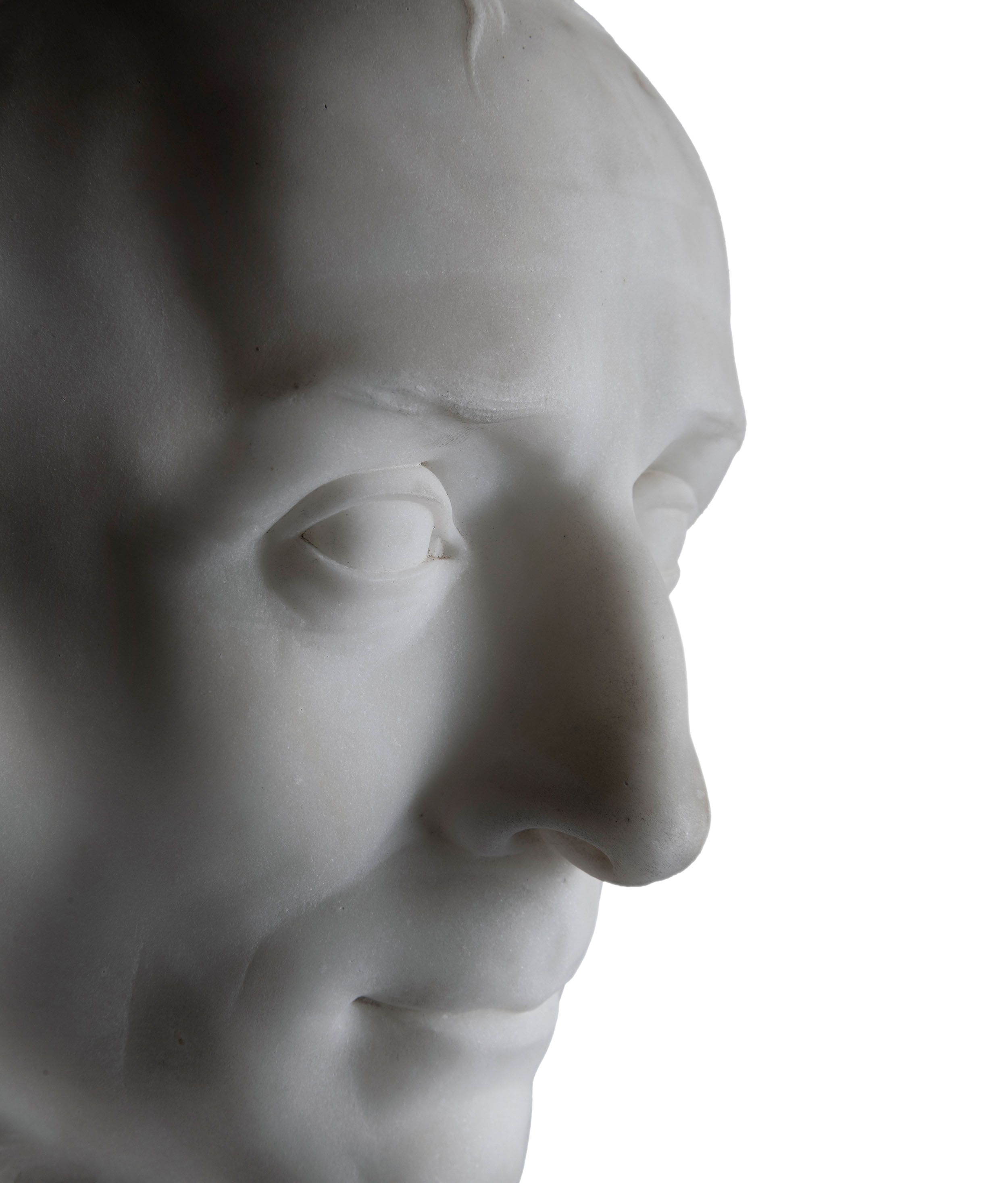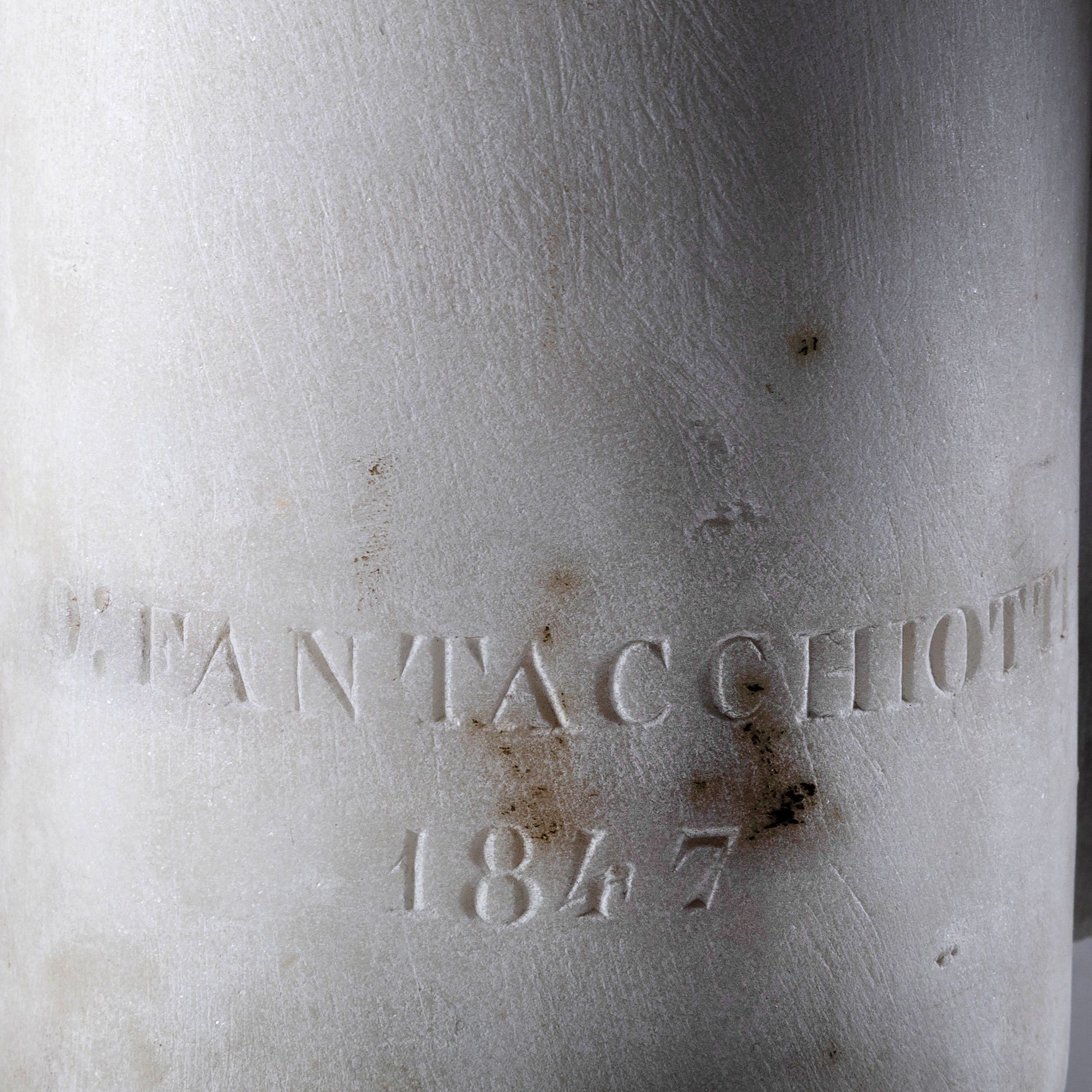The golden rules of antiques – quality, provenance, and state of preservation – fit like a glove when it comes to furniture. These objects, in addition to their intrinsic value given by the talent of the craftsman who made them, are charged with a symbolic value given by the succession of generations of ownership that are irresistible to the collecting curiosity of the connoisseur, who is omnivorous of knowledge, and by the history that over the centuries has rested on these authentic gems of art.
The Auction dedicated to Furniture, which will be held on 29-30 November 2022, features a terracotta relief by Pierre-Étienne Monnot (Orchamps-Vennes, 1657 – Rome, 1733) superbly modelled in 1699 and depicting “Livio Odescalchi riceve Innocenzo XII a palo”, formerly belonging to that prestigious Roman aristocratic family (lot 638, estimate EUR 40,000-50,000).
After his youthful apprenticeship first in Dijon, then in Paris, Pierre-Étienné Monnot arrived in Rome around 1687. He soon came into contact with Livio Odescalchi (Como, 1652 – Rome, 1713), a cultured art collector and one of the most important personalities in Rome at the time. And it was precisely for the prince, who was to be his patron for at least twenty years, that Monnot produced many of the most significant works during his stay in Rome. It was in 1693 when he moulded five terracotta reliefs for Livio (one dated and signed), now in the Louvre, with mythological scenes for the bases of some sculptures in his private collection. At the same time as other works, in 1697 he sketched out a model for the funeral monument to Innocent XI at the behest of the pontiff’s nephew, Livio Odescalchi; this was followed by a second one very close to the work in marble in 1700, an undertaking in which Carlo Maratta was also involved.
He produced works for private use, such as the portrait of the prince himself, signed and dated 1695, and a series of reliefs from those years: the Holy Family in terracotta (now in the Museum of Fine Arts in Boston) and the marble version in the Gemäldegalerie in Berlin, as well as the signed Ecce Homo, now in the Pinacoteca in Bologna, and other works from at least two inventories dated 1713 and 1733 (Monnot’s date of death), again featuring the Roman nobleman: and it is precisely to this corpus that the important terracotta relief that is to be beaten also belongs, and which is a precious testimony to his cultured and haughty art in Baroque Rome in the mid-late 17th to early 18th century.
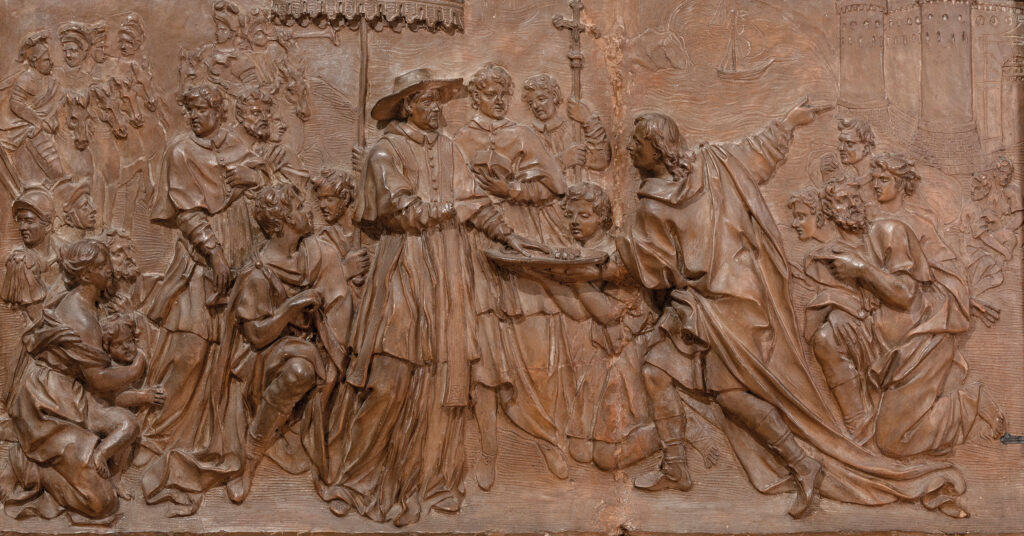
Lot 638 | Pierre-Étienne Monnot (Orchamps-Vennes, 1657 – Rome, 1733), “Livio Odescalchi receives Innocent XII impaled”, estimate € 40,000-50,000
A striking wunderkammer object is a squared casket in gilded wood and pastille, possibly from Veneto or Ferrara of the early 16th century, which is characterised by its rich and refined decoration starting from the projecting frames, the faces decorated with naturalistic elements, harpies, and fantastic animals within the columns at the corners, and on the sides, a Cupid ready to shoot an arrow (lot 723, estimate €4,000 – €5,000). The workmanship must be traced back to the production of one of the workshops active in Italy, mostly in the north-eastern area, between the end of the 5th and around the middle of the 6th century. Several examples were produced in the Ferrara area (but not only) from the second half of the 15th century, perhaps also for the court of Isabella d’Este, a refined art collector, enlightened patron and great lover of classical antiquities. The inventory of her Studiolo in the Ducal Palace in Mantua, drawn up in 1539 after her death, included small boxes and caskets made of different materials and techniques, probably also in pastille. Made in order, perhaps, to contain valuable objects or small secrets, they present an iconographic repertoire inspired by classical models, mythology and the history of ancient Rome, with episodes often taken from Titus Livius’ Storia Romana and Ovid’s Metamorphoses.
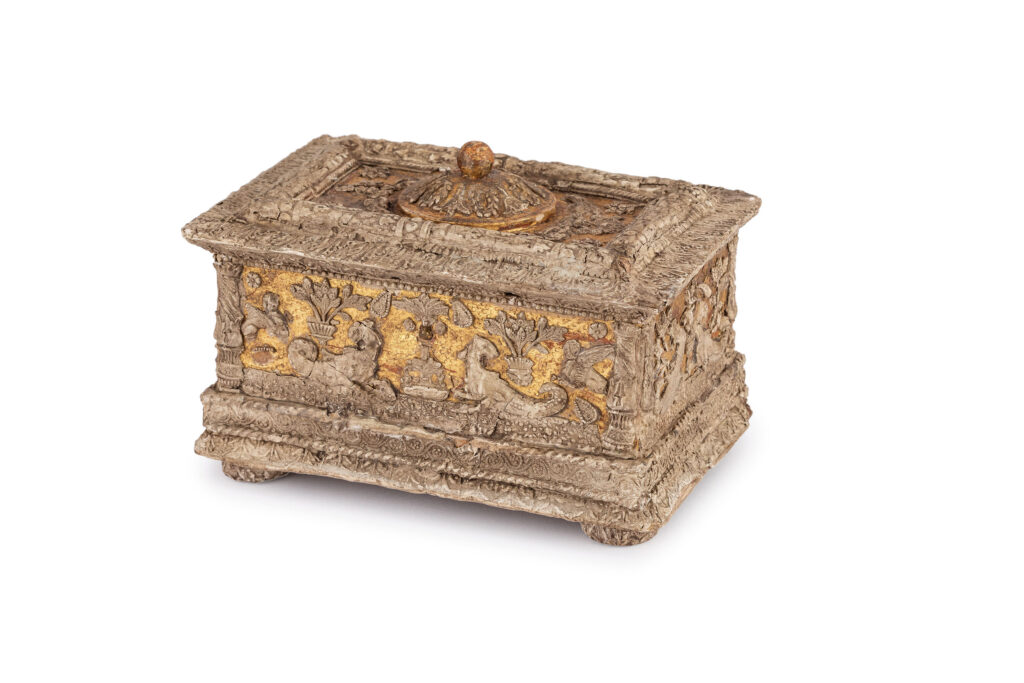
Lot 723 | Square casket in gilded wood and tablet, perhaps from the Veneto or Ferrara area from the beginning of the 16th century, estimate € 4,000 – 5,000
Odoardo Fantacchiotti’s sculpture was highly appreciated by English and American patrons in the mid-19th century, who recognised in the artist the talent and mastery of the founder of one of the most important Florentine sculpture workshops and at the same time a leading exponent of monumentalism in 19th century Italy. A pupil of Stefano Ricci and Aristodemo Costoli at the Florence Academy, where he was to be a professor from 1840, he was soon influenced by the works of Antonio Canova and Lorenzo Bartolini. It was in the middle of the century that commissions began to reach him, both public and private: among others, the monuments to Luigi Cherubini, for Prince Neri Corsini and for Raffaello Morghen in Santa Croce, the statues of Boccaccio and Accorso in the niches of the Logge degli Uffizi, the bust of Ferdinando II de’ Medici for the Museo della Specola and again, the well-known marble group Amore e Fedeltà of 1861 (which was sold for 137. 600 euro in the Furniture auction of 16-17 March 2021) for Eugenio di Savoia Villafranca-Soissons Prince of Carignano, who in 1868 was also to order from the sculptor the bust of Margherita di Savoia (Rome, Palazzo Margherita).
The Busto virile in white Carrara marble and a plinth supporting it in veined black marble – signed and dated O. Fantacchiotti 1847 on the back – (lot 782, estimated value 6,000 – 8,000), shows a proud and severe figure with a face dominated by a well-defined nose, surrounded by a neatly composed hair and a light beard, admirably sculpted, demonstrating how his manner goes beyond the strictly neoclassical language of Canova’s derivation: thanks to his great technical skill and truly modern sensibility, together with a particular attention to life, the artist successfully reinterprets the figurative tradition of the past, achieving results of absolute quality.
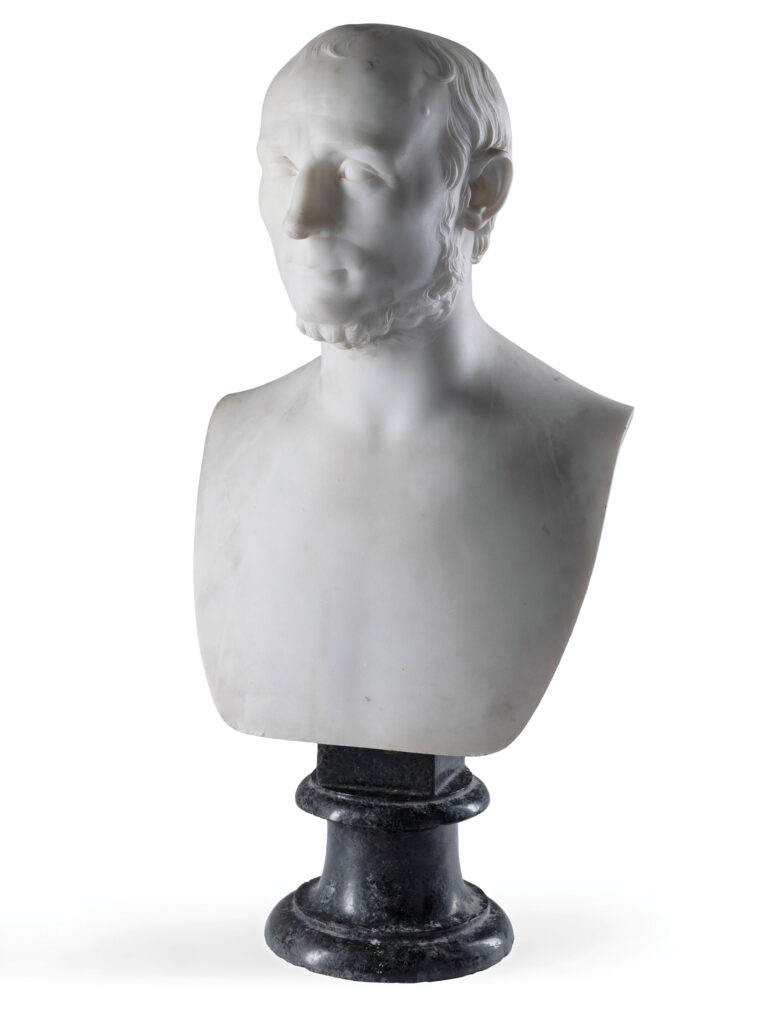
Lot 782 | Odoardo Fantacchiotti (Rome, 20 May 1811 – Florence, 24 June 1877), Male bust, signed and dated O. Fantacchiotti 1847, estimate € 6,000 – 8,000

